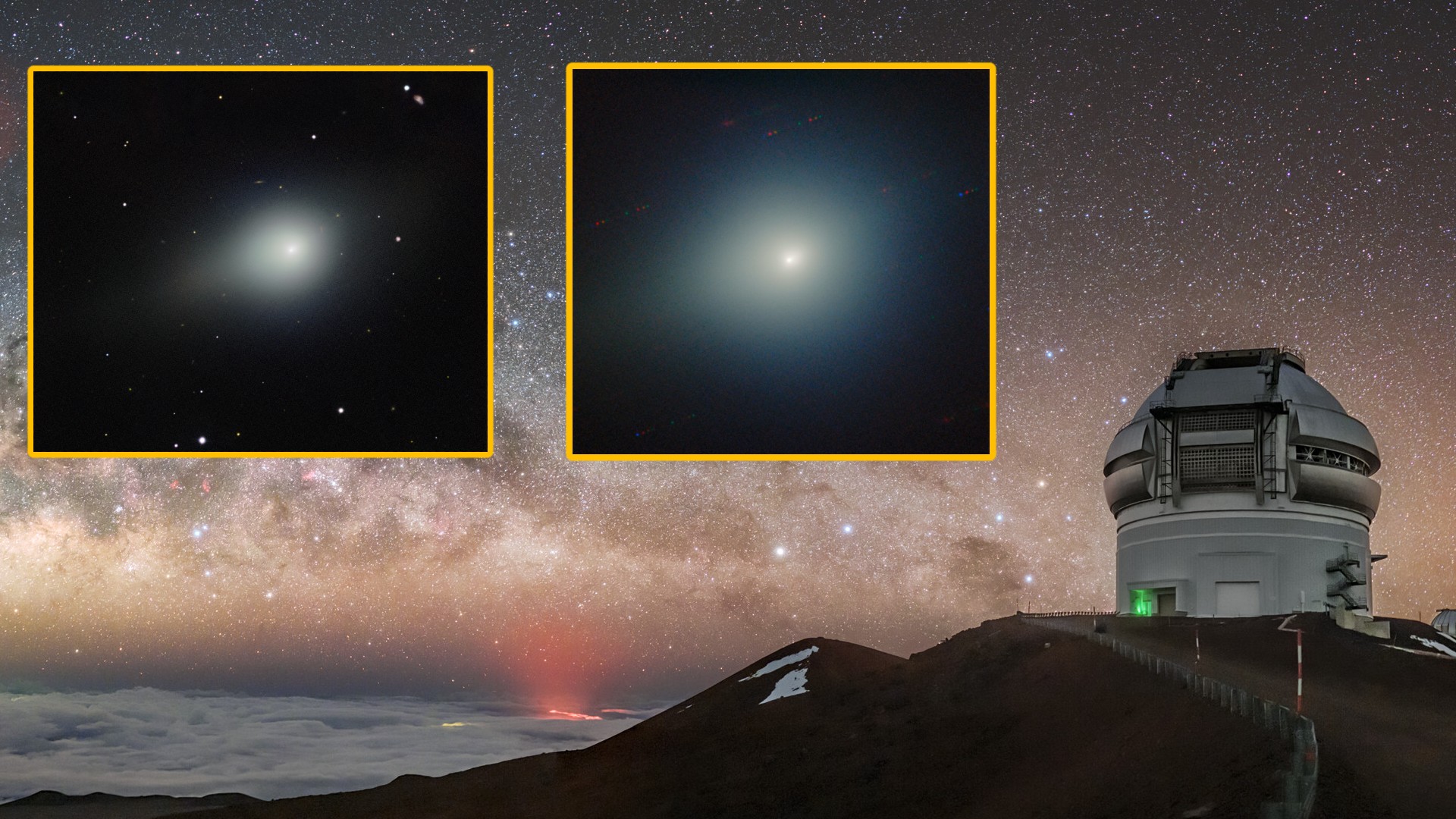'Explosive' photo captures 'otherworldly beauty' of spawning fish during a full moon
The photo won the top prize at Wildlife Photographer of the Year 2021.

A striking photo capturing the "explosive creation of life" of spawning groupers beat more than 50,000 other photographs to win the grand prize at the 2021 Wildlife Photographer of the Year competition.
The underwater image, called "Creation," shows camouflage groupers (Epinephelus polyphekadion), a species vulnerable to extinction, emerging from a cloud of eggs and sperm in Fakarava, French Polynesia, in the South Pacific Ocean.
Laurent Ballesta, an underwater photographer and biologist, took the photo on a diving trip to the Fakarava lagoon to see the groupers' spawning event, which occurs in July each year around a full moon.
"The image works on so many levels," Rosamund Kidman Cox, chair of the Wildlife Photographer of the Year judging panel, said in a statement. "It is surprising, energetic, and intriguing and has an otherworldly beauty. It also captures a magical moment — a truly explosive creation of life — leaving the tail-end of the exodus of eggs hanging for a moment like a symbolic question mark."
Related: Wow! Amazing undersea images
The camouflage groupers in the photo are some of the 20,000 fish that congregate every year in a narrow southern channel linking the lagoon with the ocean. Once they congregate, the females release their eggs and the males fertilize them with sperm in the water.
Camouflage groupers are vulnerable to extinction due to overfishing and capture for the live reef fish trade in Hong Kong, according to the International Union for Conservation of Nature (IUCN). The groupers in Fakarava are safe from overfishing, as they are in a protected biosphere reserve where such fishing is banned.
Get the world’s most fascinating discoveries delivered straight to your inbox.
"Laurent Ballesta's 'Creation' is a compelling reminder of what we stand to lose if we do not address humanity's impact on our planet," said Doug Gurr, director of the Natural History Museum, London. "The protection provided to this endangered species by the biosphere reserve highlights the positive difference we can make."
Wildlife Photographer of the Year is developed and produced by the Natural History Museum, London. An exhibition showcasing "Creation" and winning photos from other categories in the competition, including the Grand Title Winner of the Young Wildlife Photographer of the Year awards, opens in London on Oct. 15, before touring internationally to countries such as the U.S.
The museum is accepting entries for next year's competition from Oct. 18 to 6:30 a.m. ET on Dec. 9. There is an entry fee of about $41 (30 British pounds), but it will be waived for people from 50 countries that are underrepresented in the competition, such as Afghanistan and the Democratic Republic of the Congo.
Originally published on Live Science.

Patrick Pester is the trending news writer at Live Science. His work has appeared on other science websites, such as BBC Science Focus and Scientific American. Patrick retrained as a journalist after spending his early career working in zoos and wildlife conservation. He was awarded the Master's Excellence Scholarship to study at Cardiff University where he completed a master's degree in international journalism. He also has a second master's degree in biodiversity, evolution and conservation in action from Middlesex University London. When he isn't writing news, Patrick investigates the sale of human remains.


